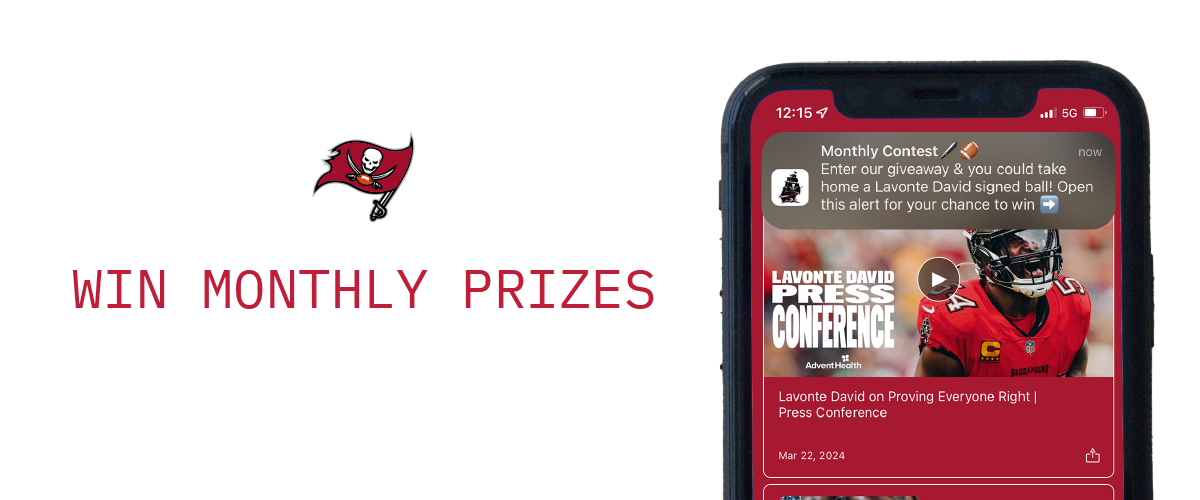QB Joe Hamilton is one of four Buc draftees to sign in the last two days
As the Tampa Bay Buccaneers' training camp rapidly approaches, the Buccaneers' personnel department is tying up the loose ends on the roster. On Tuesday, linebacker Nate Webster and QB Joe Hamilton, the team's third and seventh-round draft picks, respectively, agreed to terms on a pair of three-year contracts, becoming the third and fourth draftees to reach agreement in the last two days.
On Monday, fifth-round tight end James Whalen and sixth-round safety David Gibson also agreed to terms with the team, leaving just second-round guard Cosey Coleman unsigned among the rookies. In addition, one restricted free agent, tight end Patrick Hape, and one exclusive rights free agent, RB Rabih Abdullah, have yet to formalize deals as the Bucs put the finishing touches on a roster that is limited to 80 players for the start of camp. By signing on Tuesday, Webster and Hamilton gave the Bucs 85 players under contract.
Whoops, something doesn't add up there.
The key is the NFL Europe League, in which six Buccaneers participated this spring and summer. Because the NFLEL provides valuable playing time to NFL hopefuls but also deprives them of a chance to work and be evaluated with their stateside team, exemptions are given to that 80-man roster to accommodate these world travelers. The Buccaneers allocated six players to NFL Europe this year and are now allowed eight roster exemptions, which sounds like errant math again, but isn't. Director of Football Administration John Idzik explained the situation in greater detail.
"The players that are allocated by NFL teams to the Europe League are put into various categories," said Idzik. "A 'Category A' player, for instance, is a quarterback who has been on your roster at least eight games and finished the (previous) season on your 53-man roster. You'll get two bonus exemptions for him. An offensive lineman that has been on your roster and finished the season on your 53-man roster, you'll get a bonus exemption. A player that has been on your practice (squad) roster for over half of a season and finished the season on your practice roster, you would get an exemption for him."
The impetus behind the awarding of these exemptions is an incentive to NFL teams to send over players that they have some stake in and hope to develop further. Seattle's Jon Kitna, now the Seahawks' starting quarterback, is an excellent example of this process.
"The gist of the bonus exemptions are not 'street' guys that you signed (after the season) and allocated to NFL Europe to see how they would do," said Idzik. "These are guys that you really have tried to develop, guys that you've invested some time in. If they finish the season on your roster and they make the NFL Europe team, you get the exemptions. So that's Scott Milanovich and Aaron Stecker for us. All the rest (linebackers Bobbie Howard and Shawn Stuckey, TE Jason Freeman and CB Deshone Mallard) were 'Category F' players. You can allocate them, but the only way they receive an exemption is if they play over 50% of the snaps over there. If they do, then they automatically get an exemption coming out. If they do not earn an exemption, you can use one of your bonus exemptions on them."
Two exemptions each for Milanovich and Stecker and one each for Howard, Stuckey, Freeman and Mallard add up to eight for the Buccaneers, all of which must be used for NFLEL players. That meant the Bucs had two exemptions in hand for players coming back from Europe, one of which was utilized Monday with the signing of DT Chartric Darby. Idzik indicated on Tuesday that the team is continuing to evaluate the free agents available from the recent NFLEL season to see if there is another player that will be approached.
As mentioned above, the Buccaneers' current roster includes 84 signed players. Since only seven exemptions have been used so far, the roster could expand to just 87 players, not 88, without the signing of another NFLEL player. With one draft picks, one exclusive rights free agent and one restricted free agent still on the docket, there will likely be a need for a little more maneuvering. If all three of those players were to sign on Wednesday, another player would have to be released immediately.
That may not happen in that great of haste, but there's no reason to expect the Bucs' contract efforts to drag on. On Monday, General Manager Rich McKay indicated on Buccaneers.com that he expected to have all targeted players under contract by the start of training camp on July 23, and Idzik added Tuesday that the Bucs' trade of its first-round draft picks for WR Keyshawn Johnson in April will help speed up the matter. Since there is a limited portion of the salary cap specifically designated to the signing of draft picks, and since there are dollar ranges assigned to specific draft slots, there are less variables in the process than there have been in the past.
"It's a lot easier (without a first-round pick)," said Idzik. "Second-rounders are a little fishy, too, because there's a lot of play in those. There's play in length of contract – some will go five, some four, some maybe three – there are different options, some will have voidables. It's not as cookie-cutter as it begins to get in the third round."
Still, the general goal for both the unsigned players and the team is to get the player in the fold in time for the beginning of camp, a goal the Bucs have pursued quite successfully in recent years. Webster and Hamilton, for instance, will now get the full benefit of training camp as they try to carve out their places on the roster.
The 90th player selected overall last April, Webster was an aggressive playmaker at the University of Miami (Florida), where he racked up 301 tackles in just 22 starts. As a collegian, he used his top-notch speed to contribute the type of all-around production the Buccaneers favor in their linebackers, as evidenced by his 150 tackles, four sacks and four interceptions.
The Buccaneers had targeted a middle linebacker to back up starter Jamie Duncan in April's draft after the departure of Hardy Nickerson, and the team jumped at the chance to select Webster when he remained on the board in the third round. The 5-11 Webster was still available for the Buccaneers most likely due to his non-prototypical height for the position, but Tampa Bay has never shied away from undersized but talented defenders. Witness Derrick Brooks and Warren Sapp, to name a few players considered too short by some.
Hamilton was another extremely productive college player, finishing second in the Heisman Trophy balloting last year after a remarkable season at Georgia Tech. In addition to throwing for 3,060 yards and 29 touchdowns, the electrifying Hamilton also ran for 734 yards and six additional scores. He was the 1999 recipient of the Davey O'Brien Award National Quarterback Award, making him the first Yellow Jacket ever to win a national award.
Hamilton's storyline also mirrors Webster's in that he lasted deep into the draft due mainly to his 5-10 stature. Head Coach Tony Dungy, however, was impressed with Hamilton's array of skills and has already had early success with another 'short' quarterback with big college numbers, second-year man Shaun King.
Webster and Hamilton will get their first shot to measure up to those names when training camp opens on Sunday, July 23, most likely with the full complement of players.
























